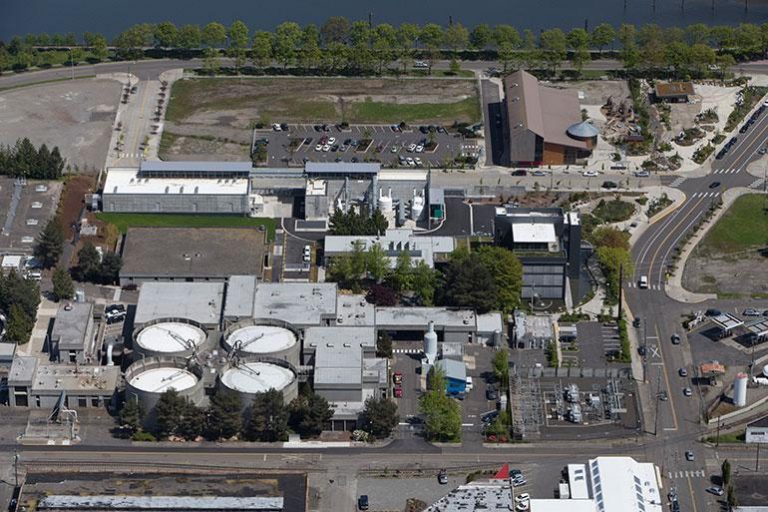How Wastewater Treatment Process Efficiency Can Improve with Electrocoagulation

As with any industry or municipality, efficiency is one of the primary priorities of wastewater treatment. While current treatment methods and technology is relatively effective, it is not as efficient as it could be. New treatment technologies have been designed specifically with increased effectiveness and efficiency in mind. One particular area of improvement can be made in the primary treatment stage where large quantities of solids are separated and removed from the influent solution.
Sedimentation had been used by itself for some time before coagulation was introduced and proven to decrease detention time. Even more recently, an improved method of coagulation has been introduced, an electrochemical version of the original.
Implementing electrocoagulation into a wastewater treatment process can improve treatment efficiency in either the primary or tertiary treatment stages for many industrial and municipal client applications.
About Electrocoagulation
Electrocoagulation (EC) was based on the science behind electrolysis. It involves a current supplied to electrodes that are positioned within the solution to be treated. In electrolysis, a chemical reaction is induced in a substance in order to create other substances. For instance, electrolysis of salt water will produce sodium hydroxide, hydrogen gas, and chlorine gas.
In electrocoagulation, the goal is to destabilize contaminants, increasing particle size to enable easier settling/filtering. Particles will naturally settle on their own, but it can take some time due to the similar charges they have. Having a similar charge will cause the particulates to repel one another, making it difficult for them to fall to the bottom of their container. When power is applied to the electrodes, oxidation of the cathode will cause corrosion and the metallic particles released into the solution will neutralize the overall charge of the solution. Once this happens, the particles will begin to aggregate and be pushed up to the top of system via hydrogen bubbles, eventually falling/setting. Even some of the smallest particles would be involved in this process.
How EC Increases Wastewater Treatment Process Efficiency
Electrocoagulation can increase industrial wastewater treatment efficiency in a number of ways:
Decreased TSS and TDS
One of the goals of EC is the reduction of solids of both the suspended and dissolved variety. EC removes TSS quite efficiently, TDS reduction is based on the composition of TDS in the specific wastewater stream. This process allows the remaining steps in the wastewater treatment process to run smoothly. By using this process, both TSS and potentially TDS, can be reduced in fewer steps with greater efficiency. Therefore, if the company decides to reuse the water, the fewer contaminants, the smoother the manufacturing process can run.
Less Sludge
Another considerable issue with other treatment processes is the high volumes of sludge produced. Sludge needs to be dewatered afterward and disposed of. Some sludge can be more difficult to dewater than others and some sludge is hazardous enough to warrant extra costs for disposal. With Electrocoagulation, much of this is avoidable. EC does produce sludge, but there is much less of it and it is easier to dewater. Disposal would not cost any extra, due to the sludge being non-toxic. The EC sludge can also potentially be used as a beneficial soil additive instead of simply being disposed of in a landfill.
Fewer Chemicals
Electrocoagulation’s conventional counterpart, chemical coagulation, requires large amounts of chemicals to induce the coagulation effect. EC on the other hand only requires chemicals for simple pH adjustments or occasional electrode cleaning. The chemical additives in the chemical coagulation process make the sludge hazardous.
Less Maintenance
Another excellent quality about EC is its simplicity. Set up is quite easy as it has very few parts, and maintenance is easier to perform, optimizing industrial wastewater treatment efficiency. To make sure the electrodes last a while, they need to be rinsed accordingly, this requires a diluted acid rinse and electrode polarity adjustment triggered by the systems control panel.
Easy Operation
Operation of an Electrochemical treatment unit doesn’t require any particularly intensive training. Much of it can be set up to be done automatically with remote monitoring capability. In addition, due to this virtually non chemical process, any necessary adjustments for contaminants can be made by a quick pH adjustment or more or less power.
Electrocoagulation is an innovative wastewater treatment process that outpaces chemical coagulation in many facets. By implementing an EC system, many industries and municipalities could increase the efficiency of their wastewater treatment process with ease.
Using a specialized EC system from Genesis Water Technologies provides the industrial wastewater treatment process efficiency that industrial organizations and municipal clients are looking for. GWT modular system configurations are able to be utilized within both new systems or existing treatment system process retrofits.
Want to increase the efficiency of your wastewater treatment process? Try utilizing a GWT electrocoagulation system to optimize your system process. To learn more, contact Genesis Water Technologies at 1-877-267-3699 or reach out to us via email at customersupport@genesiswatertech.com for a free initial consultation about your application.

